#pcc cup
Explore tagged Tumblr posts
Text

Got bored and threw this together last night to be a fake sponsor on a fake racecar. No fonts used, I based it all off of a 2 pixel wide line layer in photoshop.
The name "Evaldi" is just a bastardization of "Ivaldi". What kind of company is Evaldi? The kind that doesn't need to put anything other than it's name.
Also I wanted an excuse to put purple on this car.

3 notes
·
View notes
Text
Random brazilian curiosity:
We have a huge problem with three major criminal organizations who are involved in politics and corruption: Comando Vermelho, PCC and FIFA.
Disclaimer: Before you say comparing FIFA to the other two is unfair to the victims of the violence caused directly or inderectly by PCC and Comando Vermelho look up the absurd death tool on the construction of stadiums in Quatar for the World Cup and how while it is more than usual the misstreatment of involving building preparations for the World Cup is a pattern.
#anti-fifa#brazil#brazilian culture#ppc#comando vermelho#fifa#fifa is shady af#and it has actual political power
3 notes
·
View notes
Text
Polenta with Sausage and Peppers
In this post, I’ll be sharing the recipe for another of my go-to quick and easy meals. As with most of the meals I prepare, this one is simple enough not to require an actual recipe. That said, I’ve been finding it fun writing up these recipes and doing the ingredient price breakdown. If you missed it, I shared my tofu spinach salad last month. From start to finish, this polenta with sausage and peppers meal comes together in under 25 minutes. It’s very easy to prepare, but do know that bringing it together so quickly involves multitasking and that it’s pretty much all active time. (Therefore it’s a particularly good idea to fully read the recipe before starting). Note also that the end result will be slightly better if you take a little extra time to brown the sausage and further cook down the peppers. Regarding the quoted time, I did actually time myself making this meal on Thursday night. I started the clock the moment I stepped into the kitchen and stopped it after serving, taking photos for this post, and putting all of the ingredients away. As for clean up (not included in the time, sorry), it’s easy enough provided that you let the polenta pot soak while you eat.
While tasty enough to enjoy year-round, I will note that it’s best suited to the winter months when you’re looking for something warm and comforting. This recipe makes two servings, which makes it perfect for dinner and a workday lunch the following day. To reheat, simply microwave a portion for 60-90 seconds. The polenta won’t be quite as creamy the next day, but it will still make for a very satisfying meal. (I don’t recommend freezing it though and as I’ve established it’s quick to prepare fresh). As with most simple homecooked meals, it’s relatively affordable with the per-serving ingredient cost under five dollars.

Ingredients:
1 tablespoon extra virgin olive oil
2 sweet Italian (or apple) chicken sausages
1 red bell pepper (frozen peppers also work well)
¾ teaspoons Better than Boullion roasted chicken base, divided
½ cup yellow corn polenta
4 ounces sharp cheddar cheese
1 tablespoon salted butter
Preparation:
Add 1 ½ cups of water to a small pot, place over high heat, and bring to a boil.
Add the olive oil to a cast iron skillet and preheat over medium heat.
Dice the sausages and pepper. Add to the skillet along with ½ teaspoon of the roasted chicken base and stir to combine.
Cover and allow to cook, stirring occasionally.
Once the water comes to a boil, add the remaining ¼ teaspoon of the roasted chicken base to the water and stir to dissolve.
Add the polenta and cook over low heat for five minutes stirring regularly at the start and occasionally after that.
While the polenta is cooking, grate approximately ½ cup of cheddar cheese.
Once the polenta is cooked, turn off the heat and stir in the butter and cheese.
Divide the polenta into two serving/storage containers and top with the sausage and pepper mixture.
Ingredient Price Breakdown:
Extra virgin olive oil, $11.99 for a 33.8-ounce bottle at Trader Joe’s
Sweet Italian chicken sausages, $4.29 for a package of four at Trader Joe’s
Organic red peppers, $3.49 for a pack of two at Trader Joe’s
Better than Bouillon roasted chicken base, $8.39 for an eight-ounce jar at PCC
Bob’s Red Mill organic yellow corn polenta, $3.89 for a 24-ounce bag at PCC
Tillamook sharp cheddar cheese, $13.99 for a 32-ounce block at QFC
Kerrygold butter, $4.49 for 8-ounce block at Trader Joe’s
Calculation: $11.99/67/2 + $4.29/4 + $3.49/2/2 + $8.39/38*3/4/2 + $3.89/15 + $13.99/32*4 + $4.49/16/2 = ~$4.27
0 notes
Link
0 notes
Text
A North Eastern cultural dress worn by PM Modi is being claimed as a Ladies' dress which is digitally edited.
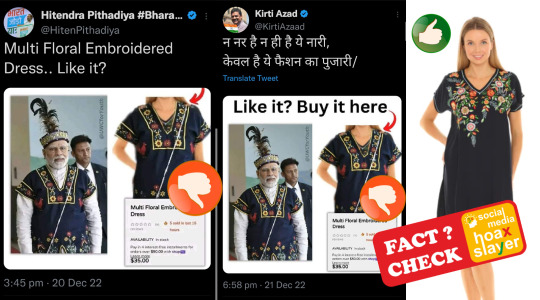
A photo is viral containing photo of PM Modi wearing North East cultural Dress along with a online shopping websites screenshot in which a girl is wearing the same dress costing 35 USD. The point they are trying to make is that he is wearing a ladies' dress which is completely false. ANI, a national News online portal tweeted screenshot of Kirti Azad, an AITC MLA - https://twitter.com/ANI/status/1605620332403888128?t=BpK55VXM_6ytuGwSjnioBg&s=08 It's been tweeted by Prominent leaders of AITC and Congress Kirti Azad, Cricketer, Part of 1983 World Cup Winning Indian Team.Thrice Member of Parliament from Darbhanga Bihar. AITC "न नर है न ही है ये नारी, केवल है ये फैशन का पुजारी" Translation - "Neither is a male, nor a female, only a priest of fashion" https://twitter.com/KirtiAzaad/status/1605555801279664130?t=YsFHNP8zUExPW7BmI3iWNQ&s=08 archive

Hiten Pithadiya, Chairman, @INCGujarat, SC Dept.| PCC Member | Ex-National Coordinator @INCSCDept | Ph.D. Scholar | Entrepreneur | Ambedkarite | Nehruvian | RTs & Views Personal "Multi Floral Embroidered Dress.. Like it?" https://twitter.com/HitenPithadiya/status/1605144776981954560?s=20&t=eWxXZomDn_BgRIhhYajMfA archive https://twitter.com/UWCforYouth/status/1604463074513416193?t=QBlk2rtGwZJbH0rs6whsaw&s=08
Truth
The dress with which PM's dress is being compared is edited, not real. PM Modi addressed a meeting of the North Eastern Council (NEC) in Shillong, Assam on last Sunday i.e. 18th Dec. It was held to mark the Golden Jubilee of NEC, which was launched in 1972. The Kurta Modi Ji was wearing was cut and pasted upon a model wearing a dress with similar color and pattern but not the same. Original Image -

Source

https://twitter.com/narendramodi_in/status/1604450767699468288 Read the full article
1 note
·
View note
Text

He can’t deal with cups...
#roll to take a powerful blow#Puck#Puck PCC#John Hobb#PCC#protean city comics#art#sketch#icecream in cups#superior to#icecream in cones#plague doctor#plague mask#masks#masks: a new generation#ttrpg podcast#ttrpg character
15 notes
·
View notes
Text
The Real Kings of California
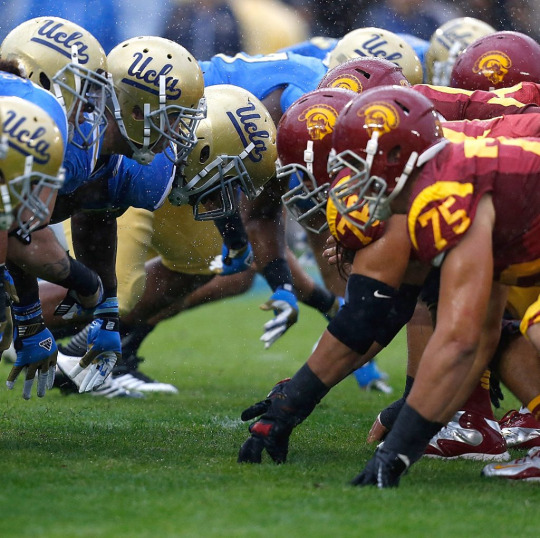
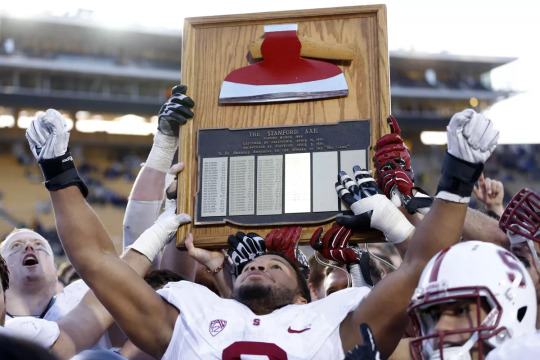
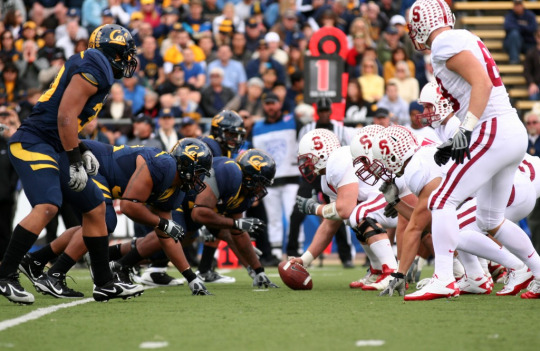
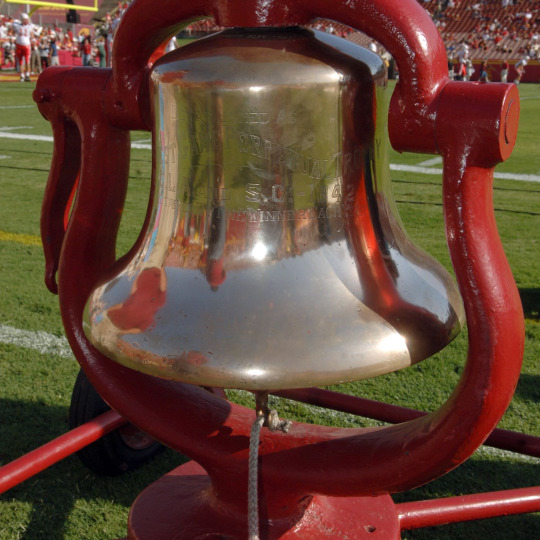
Hello everybody, welcome back to our series outlining three-way rivalry games. Well, sort of. I’m adding a four-way rivalry to the mix now. Before we fully get started you might want to check out the previous posts in the series if you’re new here.
Follow the links: The Florida Cup, The Commander-in-Chief’s Trophy, the Beehive Boot, the Michigan MAC Trophy, Iowa-Minnesota-Wisconsin
The four California PAC-12 schools all consider each other significant rivals to some extent. Obviously the UCLA-USC and Cal-Stanford rivalries are the most important. However, UC Berkeley and UCLA both have a heated rivalry as the top two schools in the University of California program and Stanford and USC are major rivals as the two private universities in the PAC-12. Both of these rivalries also embody the Bay Area vs Los Angeles competition in the state. To a lesser extent, but still noteworthy, are the rivalries between Cal and USC as well as Stanford and UCLA, which completes the four-way rivalry.
Despite splitting the Bay Area and Los Angeles schools into the two divisions, the PAC-12 has seen fit to keep those rivalry games alive with permanent crossover games and it’s a good thing as well. Many of the league’s best games in the past decade have been in the crossover rivalries.
So today we’re looking at which school gets to claim the title of the Kings of California. It’s a hypothetical Trophy that goes to the best program in the state. Currently it exists only in the imaginations of fans, but trust me, the old school fans of all four universities absolutely value wins over their three brother rivals.
The rules I’m setting down are that the trophy goes to the team with the best record against all three others, ideally 3-0. In the event of a tie, the head to head winner will claim the trophy. If a three-way deadlock comes about, the team with the best overall conference record/Rose Bowl nominee will take the trophy. If a tie truly can’t be broken, the trophy stays with the previous owner. Believe me, we will have several controversial tiebreaking scenarios.
Let’s check it out.
-
College Football Comes to the Golden State: 1892-1905
The University of California and Stanford University were the first major college football programs in the state. Cal began play in 1886 and Stanford followed in 1891. Their first meeting was on March 19, 1892 and went to Stanford, who also won the second game played in the fall.
The Big Game, as it would come to be known, was the first big rivalry on the West Coast and was played in San Francisco for the first decade before transitioning to campus sites in 1904.
USC began their football program back in 1888, but they mostly played local LA schools while Stanford and Cal played Bay Area teams for the most part. Just when it seemed that the sport was growing to connect both NorCal and SoCal, Cal and Stanford shuttered their programs following the 1905 season. There was an outcry over the brutality of old school football, and many teams dropped the sport for a season or two until better protection and tactics made the sport safer. Unfortunately, Berkeley would go a decade before restarting their program, and Stanford wouldn’t field another team until 1919.
In the meantime, the Big Game would be contested in rugby.
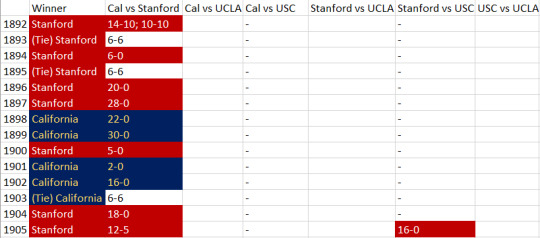
Kings of California Record Stanford: 9 California: 5
Stanford won 7 outright to Cal’s 4, but tiebreakers boosted up the count to 9 against 5.
I’m honestly not sure I should be including these contests in the history of the rivalries because USC and UCLA aren’t even included. Stanford played SC once in 1905 but that was it before they shut down their program for 15 years. If you don’t want to count these early, non-LA contests be my guest.
-
The First Dynasties: 1915-1940
USC suspended their football program for a few years, but by 1914 the Trojans were back on the gridiron, and they only needed to wait one year before they were joined by California. The Golden Bears met SC for the first time in that same 1915 season, they played twice, with Southern California winning in Berkeley and the Bears returning the favor in Los Angeles. I can’t award a trophy for this split season, but this is the only exception.
Stanford brought their team back in 1919, the same year that the offshoot branch of the University of California in Los Angeles began to field a program. Stanford fell right back into their rivalry with Berkeley and would begin to regularly play USC as well, but it would be some time before UCLA was adopted into the group.
In 1916, Cal hired former Penn and Purdue coach Andy Smith to lead the team. Smith took little time turning the Golden Bears into the first real national powerhouse west of the Rockies. California was virtually untouchable from 1920 to 1923, recording a combined 36-0-2 record and four consecutive national championships.
An arms race swiftly began as Stanford and USC tried to keep up with Cal’s “Wonder Boys.” In 1924, Stanford managed to hire away the legendary Pop Warner from Pittsburgh and were immediately transformed into one of the top programs nationwide. Stanford attended three Rose Bowls in 4 years from 1924 to 1927, and claimed a national championship in the 1926 season with a 10-0-1 record.
Meanwhile, the Trojans recruited former Iowa head coach Howard Jones in 1925. Jones also managed to turn things around for Southern Cal. The late 20′s were a dogfight between Stanford and USC for the PCC championship. The Trojans won the league three years in a row from 1927-29, and claimed their first national title in 1928 with a 9-0-1 record. The tie was against Cal. From 1931 to 1933, Southern California went 30-2-1, and tacked on two more national titles in ‘31 and ‘32.
Each of the three dynasties petered out not long after they began. Andy Smith tragically died of pneumonia at the age of 42 following the 1926 season. His replacements kept Berkeley competitive but they couldn’t match up to Warner’s Stanford squad or Jones’ Trojans. Warner stayed in Palo Alto until 1932, but the newly minted Indians had mostly ceded the league over to USC by 1928. Jones remained in Los Angeles, but after 1933 the team entered hibernation in the mid-30′s before roaring back to life.
All this time, UCLA was an also-ran. The Bruins began playing Stanford in 1925 and were run off the field 82-0. Their annual rivalry started in 1928 but didn’t amount to much in the early days. USC didn’t play their crosstown opponents until 1929, a decade after the Bruins began playing football, and they wouldn’t play regularly until 1936. Cal refused to play their sister university until 1933.
The early dynasty period wasn’t yet over, because in the later 1930′s all three of the major California programs caught a second wind. Stanford experienced a surge under Claude Thornhill, who replaced Pop Warner in 1933. The Indians made three straight Rose Bowls from 1933-35 with a 25-4-2 combined record, but they fell off dramatically after that and Thornhill was fired after the ‘39 season.
Cal experienced their own revival under Stub Allison. The Bears won or tied for the PCC championship in three of the four years from 1935 to 1938, and claimed a national title in 1937, going 10-0-1 despite finishing second in the polls behind Pittsburgh. Much like Thornhill at Stanford, Allison wasn’t able to keep up his early momentum and California floundered in the War years.
Meanwhile, Howard Jones had one more rabbit to pull out of his hat. After winning the 1939 Rose Bowl, the Trojans went undefeated the next season and claimed a national championship despite an 8-0-2 record. Jones retired in 1940 with a 121-36-13 record at USC.
Rounding out the group was the surprise Stanford team in 1940. The Indians hired former Chicago head coach Clark Shaugnessey, whose revived T-formation turned Stanford back into champions. The Indians blazed through the season undefeated and untied, and finished 10-0 with a win over Nebraska in the Rose Bowl. Many selectors gave Stanford a share of the national championship despite finishing 2nd in the polls to Minnesota. Unfortunately, Shaugnessy would only stay one more year before moving on back East.
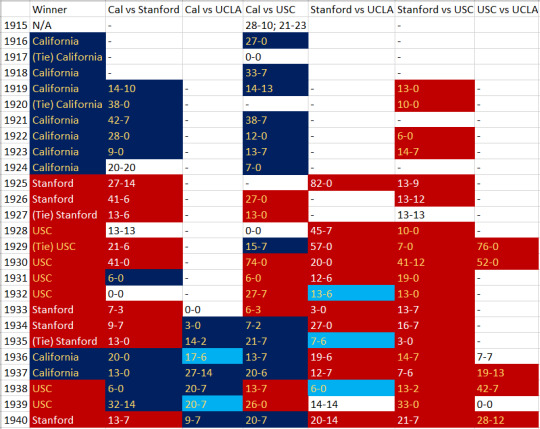
Kings of California Record Stanford: 16 California: 16 USC: 7
National Championships California: 5 USC: 4 Stanford: 2
Cal, Stanford, and USC were the titans of West Coast football in this era. All three programs featured world-beating teams and at least two of them could be considered legitimate dynasties.
You can chart out the success of each team as they tried to one up each other. Andy Smith’s Cal Bears had their glory period but gave way to Pop Warner’s Stanford and then Howard Jones’ Trojans. Fortunes returned to Stanford for a brief period under Claude Thornhill until Stub Allison brought the Bears back before USC’s resurgence under Jones. Clark Shaugnessey’s Wow Boys round out the quarter century which featured 11 national championships split between these three squads.
The Golden Bears won 11 state championships in this period compared to seven apiece from Stanford and USC. Cal arguably still has the best dynasty of this era with their four consecutive national titles. If Andy Smith hadn’t suddenly died at the young age of 42 it would be interesting to see how history would have changed in Berkeley and across the West Coast.
As for UCLA, the young Bruins were under the heel of their peers for most of this time. They only managed five total wins against their would-be rivals in this 25 year span, although for long stretches of it they didn’t play USC or Cal. But things were about to change.
-
Dogfight: 1941-1959
The title for King of California was most competitive in the roughly two decades from 1940 to 1960. There were still peaks and valleys for each team but overall there was a great leveling between the squads as Cal, Stanford, and USC took perhaps a step back while UCLA finally came into their own.
As World War II began, Stanford shut down their football program for three seasons from 1943-45, it was a pretty big setback that took the program years to recover from. In response, the Bears, Bruins, and Trojans began playing each other twice a year to fill out their schedules amid wartime travel restrictions.
UCLA won their first ever state championship in 1942, and attended their first ever Rose Bowl. However, it was their rival who became the most successful program in the 40′s. Jeff Cravath took over for Howard Jones in 1942 and reestablished the Trojans as the top team in the conference. Southern California nearly swept the PCC in the years 1943 to 1945 and went to the Rose Bowl three straight times and made it four of five in 1947.
The last great California run came about in the late 1940′s under Pappy Waldorf. The Golden Bears ran through the 1948 and 1949 seasons undefeated but lost the Rose Bowl both times to likely deny them a shares of national championships. In 1950, Cal went 9-0-1 with a tie in the Big Game but once again fell in Pasadena. Following these three consecutive seasons of top 5 play Waldorf stayed on as head coach for another six years, but the Bears’ star was already waning. Cal hasn’t been to the Rose Bowl since.
Stanford and USC had a couple good seasons in the early 50′s but UCLA finally managed to earn their place in the sun. The Bruins poached Vanderbilt coach Henry Sanders in 1949 and in a few years he’d turn UCLA into a real powerhouse. The Bruins won the PCC three years in a row from 1953-1955 and claimed a national championship for their undefeated 1954 season. UCLA went 49-10 from 1952 to 1957 and likely would have kept on rolling if not for the untimely death of Sanders before the 1958 season.
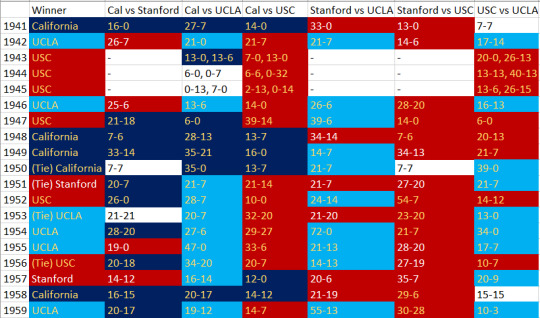
Kings of California Record California: 21 Stanford: 18 USC: 13 UCLA: 6
National Championships California: 5 USC: 4 Stanford: 2 UCLA: 1
The middle decades of the 20th Century were about as even as you could get in this statewide rivalry. UCLA led the pack with 6 wins, but were followed quickly by Cal and USC with five each. Stanford managed two trophy victories although one came from a tiebreaker scenario with UCLA.
The Bruins’s national title in 1954 rounded out the statewide run of success that saw all 4 PCC teams in California win championships from 1937-1954. If you go back to 1920, these four schools combined for 12 national titles in 34 years.
-
Trojan Empire (McKay and Robinson): 1960-1979
Following the 1959 regular season, USC head coach Don Clark resigned in favor of his assistant John McKay. It would turn out to be a momentous sea change in college football. McKay transformed the Trojans into the best program in college football outside of Bear Bryant’s Alabama for the next 20 years.
Southern California went undefeated in 1962, going 11-0 with a win over #2 Wisconsin in the Rose Bowl to claim their fifth national championship. SC won the AAWU (the successor to the PCC) in five of six years from 1964 to 1969 and attended four straight Rose Bowls from ‘66 to ‘68. Southern Cal won the national championship for the 1967 season. The banner year was capped by a win over Indiana in the Rose Bowl, but this was preceded by one of the Games of the Century against UCLA.
The 1967 Battle for Los Angeles featured the #1 undefeated Bruins against #4 USC. UCLA’s RB Gary Beban and SC’s OJ Simpson were both Heisman candidates, the game was won by Simpson’s electrifying 64 yard touchdown, which vaulted the Trojans into the Rose Bowl and on their way to the national championship.
Southern California dominated the 60′s and 70′s, and with Stanford and Cal mostly irrelevant in this period, the end of season game with UCLA ended up being the most important matchup in this four-way series. The few times that the Bruins were able to defeat SC they’d usually end up winning the Kings of Californi aTrophy because the Indians and Bears were usually well behind in the standings.
Stanford experienced a slow building revival in the 1960′s under John Ralston. The Indians hired Ralston from Utah State following the 1963 season. Stanford was mediocre for most of the decade, well under the boot of both LA schools, but when the Trojans took a step back at the turn of the decade they pounced. The Indians managed to scrape together two consecutive PAC-8 championships in 1970 and 71, and beat massively favored Ohio State and Michigan squads in Pasadena respectively, likely spoiling two would-be national championships from those Big Ten blue bloods.
Ralston departed for the NFL following the ‘72 Rose Bowl and Stanford turned back into a pumpkin, which is just as well because USC came back with a vengeance. The Trojans’ 1972 squad is considered to be one of the best college football teams of all time. SC blew through the season undefeated and then mauled #3 Ohio State in the Rose Bowl 42-17 to cap their national championship campaign. Southern California lost the next Rose Bowl to the Buckeyes but turned around to beat OSU following the 1974 season, and were acclaimed national champs by the Coaches Poll.
John McKay left Los Angeles for the NFL following the 1975 season, he was replaced by his protege John Robinson, who quickly picked up where McKay left off. After losing to Missouri in his first game as head coach, SC won 11 straight in the 1976 season to finish 2nd in both polls with a win over Michigan in the Rose Bowl.
In 1978, the Trojans went 12-1 with a PAC-12 Championship and another Rose Bowl victory over Michigan. USC was voted the Coaches Poll champions while Alabama claimed the AP title despite the Tide losing head to head in the regular season. The 1979 SC team was considered one of the most talented of all time, but their season was ruined by Stanford, who tied the Trojans in the Coliseum to rob them of an all but assured national championship. Southern Cal was named a champion by one of the official selectors, but they don’t claim the title.

Kings of California Record USC: 27 California: 21 Stanford: 20 UCLA: 10
National Championships USC: 9 California: 5 Stanford: 2 UCLA: 1
Southern California completely dominated the 60′s and 70′s. This is the time when USC became the super blue blood program we know of them as today. The Trojans won five national championships from 1962 to 1978. In this 20 year span SC won eight Rose Bowls, and finished in the top two all of those seasons.
UCLA was the clear #2 program for most of this era, but the Bruins were rarely able to put everything together to contend for national championships outside of the 1967 season where they lost to their archrivals in the Game of the Century. Stanford tacked on two Trophy wins in 1970 and 1971 but for the most part the Indians (renamed Cardinals in ‘72) were mediocre at best and mostly just competed with Cal for the Axe.
-
The Donahue Era (sort of): 1980-2001
The 1980′s was a weird period in California football. For the first time since the 1910′s, the state really didn’t have any world beating teams. Stanford and especially Cal were still mired in a long depression, but USC began to fall off as well.
John Robinson’s hot streak ended following the 1979 season and he left to coach the Rams in the NFL in 1983. Ted Tollner took the Trojans one Rose Bowl in four years and was relieved in favor of Larry Smith. Smith took SC to three consecutive Rose Bowls from 1987-89 but again these teams weren’t quite national championship caliber.
UCLA once again rose to prominence while their rivals were on the down slope. Terry Donahue was hired as head coach in 1976 and maintained a high standard of play in Westwood for a good 20 years. When USC fell off as the 70′s turned to the 80′s, the Bruins filled the vacuum. From 1982 to 1987, UCLA won the PAC-10 four times and won three Rose Bowls. Their best year was probably in 1982 when the Bruins went 10-1-1 and finished 5th in the polls.
Both Stanford and Cal were treading water through much of the 80′s. As the LA schools duked it out for conference supremacy the Bay Area rivals had little to play for besides the Stanford Axe. Still, this era was one of the most highly contested periods in the history of the Big Game. The 1982 game is famous for “The Play,” one of the wildest finishes in all of college football that saw Berkeley win on a controversial multi-lateral play that saw the winning ball carrier bowl over a member of the Stanford band in the endzone. In 1990 there was the “Revenge of the Play” that saw the Cardinal top their archrivals thanks to several roughing the passer calls and a two point conversion in the final seconds of the game.
UCLA slid back towards mediocrity in the late 80′s, coinciding with USC’s Rose Bowl three-peat from ‘87 to ‘89. All four California programs were edged out by an ascendant Washington in the early 90′s. The Huskies under Don James broke through and wrested control of West Coast football away from the Golden State. While UW was dominating the top of the conference standings, Stanford had a brief breakthrough against their rivals in 1991-92.
UCLA again experienced a brief resurgence towards the tail end of Donahue’s tenure in the mid-90′s and his successor Bob Toledo in 1997-98. However, they were never championship caliber.
Stanford again took advantage of the LA schools while they were down. The Cardinal were never world-beaters under head coach Tyrone Willingham, but they did well against their rivals. Despite several losing seasons, Willingham never lost the Big Game in his seven year tenure. Stanford also turned the tables on USC and UCLA, and were able to claim four state championships from 1996 to 2001, including a Rose Bowl berth. The good times didn’t last. Willingham left Palo Alto for South Bend following the ‘01 season and the Cardinal collapsed.
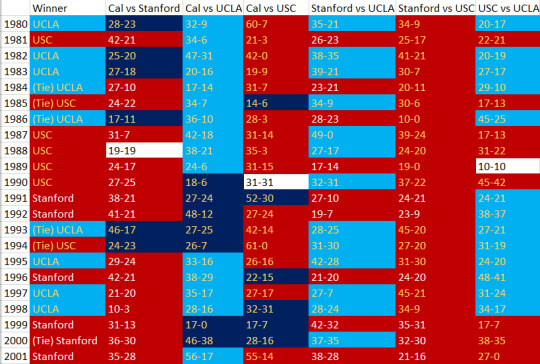
Kings of California Record USC: 34 Stanford: 26 California: 21 UCLA: 19
National Championships USC: 9 California: 5 Stanford: 2 UCLA: 1
The 80′s and 90′s was certainly a low point for California football. It was the first time that no school in the state took home a national title since Andy Smith’s Wonder Boys. UCLA and USC each had several good seasons, but very rarely were either of the LA schools in competition for national championships. The Washington Huskies were the only national title squad to come from the PAC-10 in this era.
The Bruins claimed nine Trophies in this span, mostly under Terry Donahue. USC and Stanford both managed six championships. The Trojans had their peak in the late 80′s with three consecutive Rose Bowls. The Cardinal had two surprise peaks in 1991-92 and 1999-2001 where they more or less won the Trophy because the other teams were down.
Where was Cal this whole time? Well, they weren’t doing much. The Golden Bears did have quality teams in this span, but they never experienced that breakthrough season that put them atop of all their rivals. Quality football would return to Berkeley at the turn of the century, but the opportunities would still be lacking.
-
From Carroll to the Cardinal: 2002-2019
The 2000′s saw a return of true national championship caliber football to California. After all, USC can tolerate losing for only so long. The Trojans coasted along during John Robinson’s second tenure in the mid-90′s, but Paul Hackett’s 19-18 record over three years was a breaking point. Hackett was fired and replaced by fired New England Patriots coach Pete Carroll in 2001.
Carroll was considered a compromise hire who was set up to fail, but it didn’t turn out that way. After a lackluster 6-6 season in 2001, SC exploded. The Trojans stumbled early in 2002, but finished the season 11-2 with a win in the Orange Bowl. Southern Cal went 12-1 the next year and were awarded the national championship by the AP poll, eschewing the normal BCS championship selection process. The next year USC left no doubt, going a perfect 13-0 and annihilating Oklahoma in the BCS title game 55-19, earning a consensus title.
The Trojans were a bona fide dynasty and the best program of the 2000′s. In 2005, USC just barely failed to three-peat after falling to Texas in the Rose Bowl in the best title game of the BCS era. Though they never won another championship with Carroll, Southern California came close every year and would finish in the top five every season from 2002 to 2008 with a combined 82-9 record.
SC dominated the PAC-10 in the 2000′s which obscured Cal’s huge turnaround. The year after Pete Carroll came to Troy, the Golden Bears hired Jeff Tedford, who was able to shake Berkeley out of a half century of mediocrity. Cal had several very strong seasons in the mid-2000′s, but they were cursed by the bad luck of peaking exactly at the same time as USC. Though the Bears were finally able to take home a King of California Trophy in 2003 thanks to their upset against Southern Cal.
Carroll’s Trojans and Tedford’s Bears wouldn’t make the transition from the 2000′s to the 2010′s. Carroll resigned following the 2009 season and left for the NFL, likely anticipating severe NCAA sanctions about to hammer the program. Tedford was fired after Cal suffered two losing seasons in three years from 2009 to 2011.
Stanford rose to fill the gap left by the demise of USC and Cal. Since Ty Willingham left the program in 2001, the Cardinal had fallen off a cliff. Stanford suffered five agonizing losing seasons that saw them become one of the worst teams in major college football. There were talks of shuttering the program, instead, Jim Harbaugh was hired to turn things around.
Harbaugh proved his worth and turned Stanford back into a powerhouse. The Cardinal went from 1-11 to 12-1 with an Orange Bowl win in four years. Harbaugh followed Carroll to the NFL but left his OC David Shaw to take over the Farm. Shaw made sure that Stanford was the preeminent program in the state for the whole of the 2010′s. The Cardinal went to three Rose Bowls from 2012 to 2016 and won the PAC-12 North five times in seven years despite peaking at almost the same time as the Oregon Ducks under Chip Kelly and Mark Helfrich.
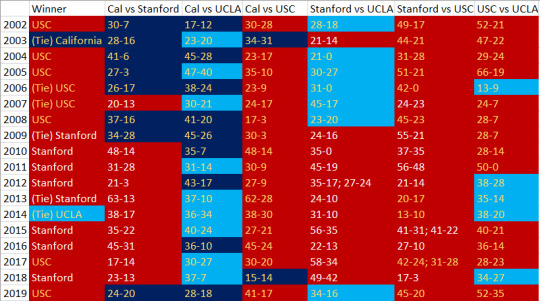
Kings of California Record USC: 42 Stanford: 34 California: 22 UCLA: 20
National Championships USC: 11 California: 5 Stanford: 2 UCLA: 1
As you can see, the 2000′s belonged to USC while Stanford dominated the 2010′s. The Trojans tacked on two national titles in 2003 and 2004, though they could have won even more if it wasn’t for their in-state rivals. Southern Cal’s loss to Cal in 2003 probably kept them out of the BCS Championship Game and a consensus title. SC’s losses to UCLA in 2006 and Stanford in 2007 likely cost them two more berths in the national championship game.
Even while peaking, the Cardinal were never quite good enough to make a BCS Championship Game and they were already in a bit of a decline by the time that the Playoff came about. Still, Stanford surprisingly won 8 Trophies in 10 years from 2009 to 2018.
We also got to see the return of rematches in the in-state series. Stanford and UCLA met in the PAC-12 Championship in 2012, then the Cardinal and Trojans faced off in Santa Clara in 2015 and 2017. It was the first time there were two games in a year in the in-state rivalries since WWII.
The Bruins had a few good years under Jim Mora but they were never able to compete with Stanford or Oregon atop the league standings. For the most part Cal hasn’t been nationally relevant since Jeff Tedford’s departure.
-
Extras
Kings of California Record (1915-Present) USC: 42 Stanford: 25 UCLA: 20 California: 17
If we remove the early years of the series where only Stanford and Cal played each other, we get a more accurate picture for how things stand between the four rivals. In the all-time standings nobody is even close to catching USC, the Trojans have nearly double the number of Trophies as anybody else which shouldn’t be a surprise. Despite similar starts as the Bears and Cardinal in the 20′s and 30′s, only Southern California turned into one of the super-elite blue blood programs.
Not much room separates Stanford, UCLA, and California. The Bears did all of their work early on, having only won a single Kings of California Trophy in the past 60 years. UCLA was the most consistent winner outside of the Trojans from the 50′s to the 90′s, and they steadily climbed up to second place until Stanford vaulted over them in the past decade.
As for the future of these rivalries, I’ll just say that I’m very interested to see where things are going. I shouldn’t have to say it but we all know that West Coast football isn’t quite what it used to be since the USC glory days. The Trojans themselves appear to be in a state of flux, unable to return to prominence under Clay Helton despite having the talent to do so. Stanford seems to have fallen off in the past few years, but as long as Shaw is there the blueprint for success is still in play. UCLA is gambling on Chip Kelly to return them to glory after spending the better part of two decades outside of the top flight in the PAC-12. Cal appears to be building something under Justin Wilcox, it remains to be seen when they’ll hit their ceiling.
So that brings us up to present day. I hope you enjoyed reading this as much as I liked writing it. California is my home state and I have been endlessly fascinated by the in-state power dynamics in college football since I became a fan.
Unfortunately it looks like the Coronavirus is going to raise hell on the gridiron this year. As of right now the PAC-12 is still committed to playing a conference-only schedule. Let’s see how it plays out. Go Card.
-thecfbg
4 notes
·
View notes
Text
My Life at 30. 😍
Since the lockdown started, I make the most of my 'me' time reflecting on the significant milestones that happened in my life. I believe the best thing we can do to stand against this pandemic is to constantly pray, reflect, and remember how blessed we still are.
I realized, now in my early 30s, that my life has been defined by the journeys I take, not the destination I want to reach.
I don't know what destination will I end up in the long run. At some point I felt lost - far from getting where and who I want to be. I haven't reached my destination yet. But there's one thing I'm sure of - I'm enjoying every inch of my journey, from the simplest, most ordinary experiences of each day (Even the most complicated ones).
I decided to write this, not to brag but to inspire someone (somehow) to get a kick out of life. May you find joy in your journey and fall in love with the process because life is too beautiful to miss out.
MILESTONE 1:
PROFESSIONAL GROWTH and ACHIEVEMENTS
"Never stop learning, because life never stops teaching". Anon
2002 - Graduated as 'First Honorable Mention' of batch 2001-2002 at Magahis Elem. School.
2006 - Graduated as Class Valedictorian of batch 2005-2006 and became the recipient of 'EXEMPLARY BEHAVIOR AWARD' (The most significant award I received in my whole life) at Divine Word School of Semirara
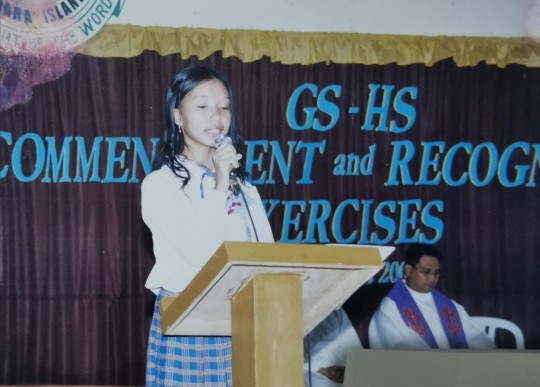

2011- Obtained my Bachelors degree in Secondary Education Major in English from Pasig Catholic College.
Awards/Honors received in college:
~Academic Scholar (First year college) ~Dean's Lister (2nd sem - Third year college) ~SPECIAL ACADEMIC AWARD (Awarded on graduation day)

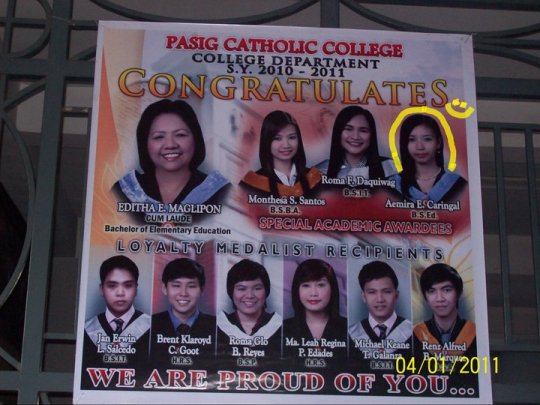
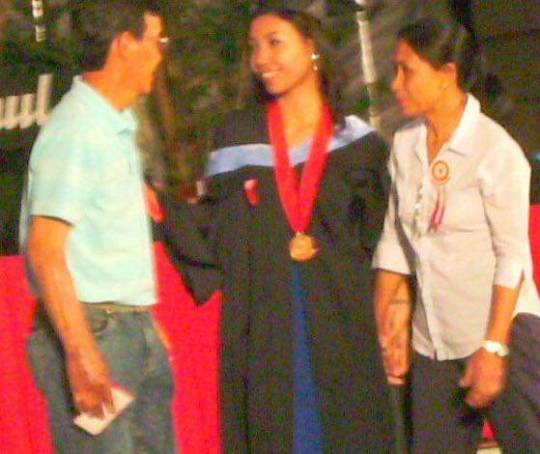
July 2011 - I got my first job as an Online ESL instructress to Korean students at English Language Studies International in Ortigas, Pasig City.

March 2012 - I passed the (L.E.T) Licensure Examination for Teachers.
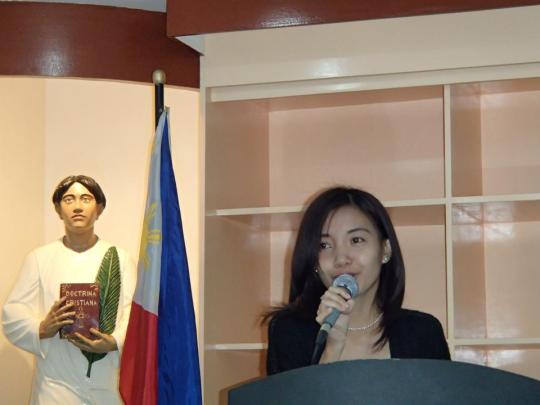

Photos taken during LET Tribute @PCC
May 2013 - Resigned from my first job and pursued my first teaching career in Pasig Catholic College (My Alma Mater).
On my third year, I became one of the recipients of GAWAD GURONG GENYO AWARD (3rd & 4th qtrs only).

August 2015 - Got admitted to Loyola Schools of Graduate Studies at Ateneo De Manila University, my dream school.
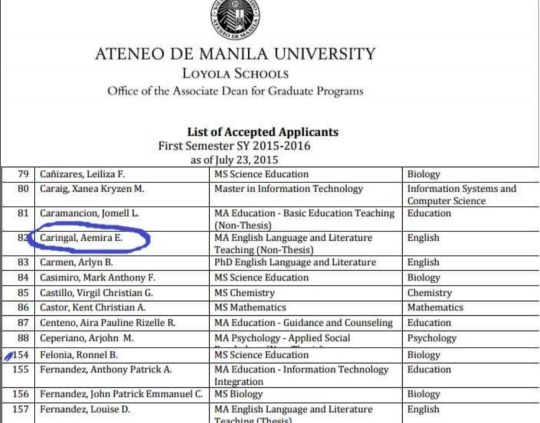
May 2016 - Explored the BPO world and worked as CSR (Customer Service Representative) at Transcom Worldwide in Tiendesitas, Pasig City.
October 2016 - Became one of the 'FAB FIVE AGENTS' for the month of October.
December 2016 - Got promoted as CSM (Customer Service Manager).
May 2017 - Resigned from my previous job and transferred to Batangas (my hometown) to pursue what I love most - to teach in public school this time. I was hired in SHS in Tuy.
June 2017 - present - My cup overflows with variety of inputs and worthwhile experiences I gained from attending numerous regional, national & international seminars and conferences.
Sept. 17-18, 2019 - Selected as an ORAL PRESENTER at DCBER 2019 (District Conference of Basic Education Researchers) held @ Batangas Country Club.
2. ADVOCATE of FinED (Financial Education)
(1) Becoming one of DepEd's curriculum writer was indeed a humbling experience; it gave me the perfect opportunity to make an impact with. I'm blessed to have worked with brilliant professionals and accomplished the ff. tasks:
>integrated core messages of FLE to the existing K to12 curriculum across grade level;
>developed, validated and finalized lesson exemplars of Financial Literacy modules;
>drafted policy on the Integration of Financial Literacy Education;
>developed Monitoring and Evaluation Tool on the Integration of Financial Education in the K to 12 Curriculum.
Note: Integration is on its way. Soon enough, the seeds we've planted shall be harvested in due time.
(2) My article titled "The Road to Financial Freedom" was published at INSTABRIGHT e-Gazette online magazine/ISSN: 2704-3010, Volume I, Issue I, August 2019. Available online at www.instabrightgazette.strikingly.com
1 note
·
View note
Text
Starting with their award-winning Kolsch, Bellingham's Chuckanut Brewery and Kitchen expands bottled offerings and distribution.
Press Release

image courtesy Chuckanut Brewery and Kitchen
There’s always a silver lining to a storm cloud and lucky for Chuckanut beer fans, it’s coming in the form of bottled Chuckanut Beer! The Corona Virus has made us all more creative with how we get our great beer to those who want it, just not at a favorite restaurant or pub. Instead it’s got to be in the form of beer to go. Chuckanut is now offering its world famous, award winning beers in half liter bottles! Chuckanut bottled beer will be available from NW Beverages in Washington state, Day One Distributors in Oregon, Dickerson Distributing in northwest Puget Sound and West Craft in Vancouver, BC, Canada. Chuckanut beer in half liter bottles can be found at Metropolitan Markets, PCC, Town & Country and smaller bottle shops in the Puget Sound region. In Portland Chuckanut bottles will be located at Market of Choice, New Seasons Markets and smaller bottle shops and in the northwest Puget Sound it is on the shelves of the Community Food Co-op, Elizabeth Station and other grocers.
The first to be distributed around the Puget Sound, Portland, OR and Vancouver, BC areas is Kolsch, the current Gold Medal World Beer Cup winner that is a light bodied soft malt flavored ale that gives way to a crisp finish. Kolsch German Style Ale has undergone cold conditioning resulting in a slightly fruity aroma, effervescent quality and smooth, easy finish. Great with sandwiches, seafood and any spicy foods it is a winner of multiple awards at the Great American Beer Festival (4 medals), World Beer Cup (2 medals), North American Beer Awards (5 medals) and WA Beer Awards (4 medals) since 2011. Watch for other bottled Chuckanut beers in the future as these will come on-line as time permits. Whenever you reach for a Chuckanut beer you will be glad you did, they are always elegant, delicious and easy to drink!
Chuckanut Brewery & Kitchen located at 601 West Holly St, Bellingham was awarded the National Small Brewpub/Brewer of the Year 2009 and National Small Brewery/Brewer of the Year 2011 at the Great American Beer Festival (GABF). The full service “Kitchen” currently offers Beer to Go with curbside pick up 12:30-6:30 pm Wednesday-Sunday(360-752-3377 opt 1). Chuckanut’s South Nut’s Tap Room is in the heart of Skagit Valley, 11937 Higgins Airport Way, Burlington. South Nut currently offers Beer to Go with curbside pick up Wednesday-Friday 3-6 pm and Saturday 1-6 pm (360-752-3377 opt 2). Check out additional information about Chuckanut Brewery at http://www.chuckanutbrewery.com/
from Northwest Beer Guide - News - The Northwest Beer Guide https://bit.ly/2w6L514
1 note
·
View note
Text
Japan Cup MamaHD NBC Sports ESPN+
⇩⇩⇩⇩⇩⇩⇩
👨💻 https://gowwwurl.com/sport?subid1=horse+racing&source=tumblr_com&se=2019_11_24&keyword=japan+cup+calendar+without+membership
↑↑↑↑↑↑↑
P 2019-12-07T14:21:43 11/11/2019 06:21 PM TNIE K 76 16 JTWQ 25 Oct 2019 02:21 AM PST 23 Oct 2019 07:21 AM PST 930 52 4 79 347 387 757 290 K 26 Nov 2019 06:21 AM PDT 17 292 380 683 T
Japan cup of noodle museum. The Japan Cup Criterium takes place a day ahead of the Japan Cup Cycle Road Race. "It was a really nice criterium with a great atmosphere. There were a lot of people. From the beginning we rode. J1 League; J2 League; J3 League; Japan Footbal. Regional Leagues; Emperor Cup; J-League Cup. 2019. Group Stage; Play-offs; Final Stages; Super Cup; Play-offs 1/2; Play-offs 2/3; J Youth Cup; Nadeshiko Lea. Nadeshiko Lea. Empress's Cup; Nadeshiko Lea. Nadeshiko Lea. Women's Play. New Year Cup. Japan Cup Special, The Japan Times. 2018 FIFA World Cup Russia - Teams - Japan. Emperor cup japan. Ladbrokes Winter Carnival. Seppelt Wines Stakes Day. Shores I would say the odds are reasonably high, I mean, with a field as big as that, It could happen. It's like in the Kentucky Derby, the best horse often doesn't do that well due to field size, post position, etc. But I think in the Japan Cup, these two will be right there in the end. at least I hope they will. 2913 days ago.
Japan cup tickets. Japan cup 2018 tamiya champion. World cup japan 2019. Japan cup 2019 horse racing.
Japan Cup 2019 Field, Odds, Results, Tips, Offers
Kick-off Times; Kick-off times are converted to your local PC time. J1 League 2019 live scores, results, Football Japan - FlashScore. Japan Tea Cup Saucer for sale, eBay.
FlashScore Kick-off Times; Kick-off Sunday, 29 December 2019 FQ 35 10 17 J 73 72 50 CHZD DF 14 402 FXK 759 80 147 DKIP 137 173 981 256 HAR LG 960 54 38 26 455 42 868 65 52 646 951 49 29 790 995 Japan Cup japan cup 31 IOUN 6 21 10/30/2019 80 Saturday, 14 December 2019
Cigar Mile Handicap. This feature is not available right now. Please try again later. Nov 25, 2018 Tokyo Racecourse. 【競馬レース結果】ジャパンカップ 強い!アーモンドアイ 2分20秒6国内最強レコード - Duration: 2:35. おずけんJRAオッズ研究.
NMVZ VWD 10/31/2019 ONZ PCC big as that, B Summary MA 86 22 3 89 16 2 N From the beginning we rode. AR 88 6 996 336 370 48 219 70 413 2 42 31 954 18 441 35 YD 128 124 19 8 954 18 W 751 Z 84 846 65 95 73 302 490 180 73 587 431 61 335 90 16 19 66 368 716 86 547 541 MI 896 404 11/15/2019 19 UOHM 345 595 5 611 202 542 Saturday, 07 December 2019 07:21:43 30 17 84 61 8 203 NWBP 84 26 10 73
Japan Cup. Jump Racing: The Open Day 3. Japan cupid review. The Mini 4WD Japan Cup (Japanese: ミニ四駆 ジャパンカップ, Mini Yonku Japan Kappu) is a annual, national Mini 4WD race tournament by Tamiya that takes places in Japan. Tamiya holds the Japan Cup around June to October each years. (formerly July to August prior to hiatus after Japan Cup 1999) The main. Explore Japan's legacy of thoroughbred horse racing. Return to The Japan Times top page JT Digital Archives The Japan Times Alpha Jobs Study in Japan JT for Women JT Bookclub Japanese School. AAMI Victoria Derby Day. Jump Racing: The Open Day 2. Japan League Cup 2019 table, full stats, livescores. League, teams and player statistics. Check League Cup 2019 page and find many useful statistics with chart.
Japan cupcakes. 2019 Breeders Cup. Official website. Japan cupid. Japan cup size. Thank you! We'll be in touch with news, updates, and ways you can help the team. And to stock up on stylish Team USA gear that you can wear all year round, visit the Team USA Shop. Japan cup table. Summary - J-League Cup - Japan - Results, fixtures, tables. Japan cup 2010.
Jump Racing: The Open Day 1. Japan Cup (G1. Profile of Invited & Japanese Horses, Past Results of Foreign Runners 2018.11.22 Japan Cup (G1. Comments from two Japanese runners' connections 2018.11.21 Japan Cup (G1. Training Report of Foreign Entries (as of November 21) 2018.11.21 Japan Cup (G1. Past Performance of Foreign horses (1981-2017) 2018.11.20 Japan Cup (G1.
youtube
Japan cup noodle museum osaka
Japan - Rugby World Cup 2019.
1 note
·
View note
Photo

Taken on May 23rd, 2019. A Daenerys cosplayer meets a Jon Snow lookalike and a Starbucks cup. It was glorious. #cosplay #phoenixcomiccon #pcc #phoenixfanfusion #pff #got #gameofthrones #daenerystargaryen #khaleesi #motherofdragons #emiliaclarke #jonsnow #starbucks (at Phoenix Convention Center) https://www.instagram.com/p/ByfRuBcjphn/?igshid=mogdjho6hm8o
#cosplay#phoenixcomiccon#pcc#phoenixfanfusion#pff#got#gameofthrones#daenerystargaryen#khaleesi#motherofdragons#emiliaclarke#jonsnow#starbucks
1 note
·
View note
Text
How do implement best practices of plastic waste management?
Introduction
In this blog, we shall discuss how to implement the best practice of plastic waste management in India, it is generated around 20-25 thousand tons every day. Therefore, plastic waste rapidly enters and affects environmental pollution and has been occurring due to the non- disposal of plastic waste. Thus, it leads to spreading of life-threatening diseases in humans and animals. Nowadays, it is one of the major concerns in India and we have started implementing plastic waste management in our daily life. So, The government of India introduced the extended producers' responsibility (EPR) 2016, and the plastic waste management rules, 2016 same define the responsibilities of PIBOs to manage plastic waste disposal in India.
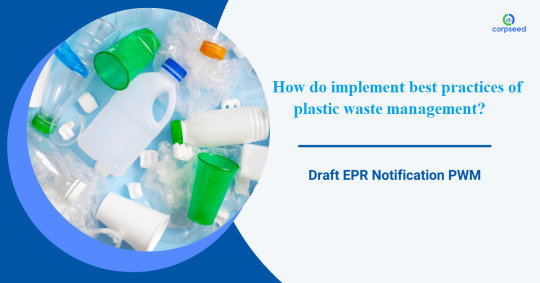
As per the provision of PWM rules, Extended producer responsibility (EPR) for the management of plastic waste packaging is entrusted with the PIBOs (Producer, Importer, business owners) who introduce the product to the market. They are required to establish the system for management of plastic waste generated due to their products by engaging with local bodies and are responsible for setting up the PWM (Plastic waste Management) system with assistance from producers and brand owners.
Further, Those PIBOs who are operating in more than two states, are required to obtain registration from CPCB and others who are working in one or two states need to obtain registration from SPCB/PCC, EPR Action plan for PWM has to be submitted for obtaining the registration.
There are numerous steps available to implement the plastic waste management
To Minimise the consumption of plastics in your daily life, here are some alternatives to plastics that can help in reducing the usage of plastic as well as awareness among individuals.
Avoid using single-use plastic items in your daily life- In daily life please avoid using single-use plastic items such as straws, plastic cups, plates, and spoons. Instead of this try to use washable items made of glass, steel, and paper. It leads to benefits for the environment and society as a whole. Plastic disposable items are creating pollution in the environment as well as helping in improving the environment. In 2021 Europe has banned single-use plastic items in their country such as straws, cutlery, drinking bottles, or cotton buds within its borders.
Plastic, A Global Issue- Nowadays, it is considered to be the most concern issue in our society. The fact that plastics are now a serious problem is proved by the fact that more and more governments are proposing measures to reduce the impact on the environment.
Make use of plastic bags, instead of polythene- Please make sure to take a cloth bag with you whenever you go to the supermarket. Clothing bags can be reusable and help in reducing pollution.
Replace plastic containers with steel and glass products- Try to use stainless steel and glass containers instead of plastic ones. This will not only help in reducing pollution and saving the planet but also be beneficial for individuals' health.
Choose to reuse the plastic product and give some more packaging to a new purpose- If you are using plastic bottles or containers, reuse them instead of throwing them away. A bottle or a container can be filled up as many times as you want. Thus, try to reuse it rather than throw it away.
Important License/certification required for the recycling of plastic waste management
NOC- No Objection Certificate from the SPCB (State pollution control board), This certificate allows individuals for recycling plastic waste.
CTE- Consent To Establish is the form of compliance required to establish or carry out manufacturing industrial operations. Any industry, operation, or process discharging sewerage or trade effluent to the environment or likely to emit air pollution into the atmosphere is required to obtain CTE from the respective state pollution control board.
CTO- Another form of compliance to secure NOC is Consent To Operate. In India, It is mandatory for all industries. All manufacturers are required to secure this consent to ensure their industry is maintaining standards related to the operations.
Conclusion
In this article, We have discussed the alternatives to plastic that we can implement to reduce the pollution that occurs from plastic. There are a number of best possible alternatives to plastic to implement in daily life.
CORPSEED shall help you in getting the licenses for the recycling of plastic waste management and plastic recycling license help you by providing the information regarding the same. Hopefully, this article will be helpful for you and give some insights related to plastic waste management.
Read more this blog :- How can I apply for plastic waste management?
#epr registration for plastic waste#plastic waste management certificate#plastic waste management registration#plastic license#plastic recycling license india#plastic waste registration#epr certificate for plastic waste#plastic recycling license#plastic permit#plastic waste management#epr for plastic waste#epr plastic
0 notes
Text
Pacific Coffee 26歲啦!大玩本土懷舊Crossover
舊愛還是最美,說的不是情人,而是老香港的舊事舊物。數數手指,陪伴香港人成長的,除了叮叮、大排檔、雞蛋仔,還有土生土長的Pacific Coffee。
在這個瞬息萬變的時代,一個本土品牌能紮根香港26年,著實不容易。為了與大家分享這份喜悅,Pacific Coffee大玩集體回憶,推出多款26週年主題精品、限定特飲和驚喜優惠,帶大家於鬧市尋找老香港情懷。

講到最能代表香港的經典設計,非紅白藍膠袋莫屬。它盛載著幾代人的小城故事,亦標誌著香港人堅毅不屈的拼搏精神。Pacific Coffee於7、8月限定使用的26週年特別版紙杯,就以紅白藍為靈感,盛載香濃咖啡之餘,充滿本土人情味。而講明大玩港式懷舊crossover,又點止得紅白藍紙杯,驚喜陸續有來!
Pacific Coffee X 么鳳 「口立濕」話梅特飲
繼年初推出陳皮牛奶咖啡之後,今個夏天再與本地涼果老字號么鳳二度聯乘,以「口立濕」話梅與日式柚子和綠茶mix and match,調製兩款夏日清新fusion drink,全新演繹港式懷舊味道。
凍柚子話梅梳打
充滿清新果香的柚子醬,配搭微微回甘的原粒話梅,雙重酸甜滋味,加上口感清爽的有氣水,特別消暑解渴。
凍柚子話梅抹茶
柚子的酸甜,融入醇厚微甘的抹茶,感覺格外清新,再加入原粒話梅浸泡,甘甜滋味更有層次,抹茶控必愛!(另有熱飲供應)

凍柚子話梅梳打(左);凍柚子話梅抹茶(右) 只供應大杯裝 $38
Pacific Coffee X 駱駝牌 紅白藍真空壺
飲品以外,Pacific Coffee亦再次與超過70年歷史的駱駝牌合作,推出100%香港製造的限量版經典真空壺。去年首次推出時,全城瘋搶賣斷市,今年再度歸來,更換上紅白藍三色,大玩懷舊復刻,潮味極濃!容量為450毫升,方便攜帶,可裝咖啡、熱茶之餘,夏天裝凍飲夠晒cool!
除了真空壺,手機卡片套亦加入紅白藍設計元素,方便收納銀行卡、八達通等,而且可以直接拍卡、付款,符合港人「快靚正」的要求。

PCC x 駱駝牌 經典真空壺($388 / 450毫升);手機卡片套(購買任何推廣飲品加$10即可換購)
呷一「杯」老香港情懷
配合本土懷舊主題,隨行杯和大肚杯亦分別推出香港版。3款隨行杯的彩繪均由香港客人設計,分別以紅白藍、小巴膠牌、茶樓點心,訴說屬於香港的故事。而大肚杯的杯身則以簡潔線條勾畫出尖沙咀海傍及維多利亞港的面貌,簡簡單單的香港風情畫,甚有懷舊玩味。

隨行杯–香港版($98 / 300毫升);大肚杯–香港版($148 / 16安士)
Happy Birthday!26週年驚喜優惠
生日當然要好好慶祝!除了以上多款主題精品,Pacific Coffee更特別準備多重優惠,與香港人開心share!
同年出生 即享$26優惠
與Pacific Coffee同樣於1992年出生的顧客,整個7月都可以$26優惠價購買標準裝手調飲品。

7月生日月指定蛋糕半價
凡購買暖心紅莓朱古力蛋糕,可享半價優惠。
穿紅色衣物 享買一送一
於7月20日(10am-6pm)穿著紅色衫褲鞋襪,或配戴紅色眼鏡、領呔、手袋等衣飾,即可享標準裝或以上手調飲品買一送一。
8月手調飲品買一送一
所有已登記Perfect Cup卡會員於8月份購買任何標準裝或以上手調飲品,即可享買一送一。
更多Pacific Coffee 26週年主題精品及優惠詳情:www.pacificcoffeehk.com
(資料由客戶提供)
1 note
·
View note
Text
The Real Northwest Champs
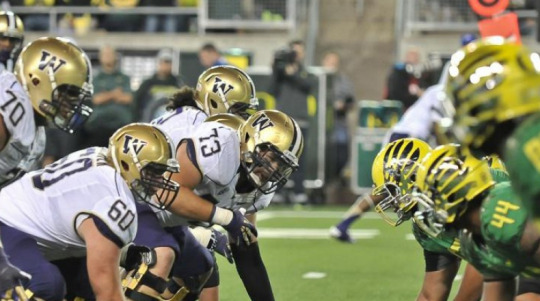


Hey everybody, we’re back with another hypothetical trophy game. We move back out West to crown the real champions of the Pacific Northwest. I think there should absolutely be a trophy exchanged between the four FBS schools in the Northwest. To a certain extent they all consider each other rivals, the State of Oregon has the Civil War and Washington has the Apple Cup, and the Ducks and Huskies have their own high profile rivalry. Even if you wouldn’t call Oregon-Washington State or Oregon State-Washington real rivalries (and many wouldn’t), it goes without saying that each of the four schools measure themselves against the others.
For long stretches of time, many people have overlooked the football played out in the furthest flung corner of the Lower 48. They’re missing out on some great stories and fascinating local culture. I’m here to shine a light on it.
So, I’ll be using the same rules that governed the Kings of California trophy. The trophy goes to whichever team has the best record among the three. Two-way ties will be broken by head to head wins if applicable. Three-way ties will be broken by the team with the best conference record. This shouldn’t really be an issue because for the most part the foursome have all been in the same conference for all of their histories.
Oh yeah, and check out the other posts as well if you’re interested: Florida Cup, Commander-in-Chief’s Trophy, Beehive Boot, Michigan MAC Trophy, Big Ten West, the Kings of California, the Cal State Champs, and Tobacco Road
-
The Early Days: 1894-1916
Football came to the Pacific Northwest in 1889, when the University of Washington fielded its first football team. They were quickly followed by Oregon Agricultural College in 1893 and then both the University of Oregon and Washington State College in 1894.
The first game played between any of these teams was the a meeting between Oregon and Oregon Agricultural College in 1894, a 16-0 win for the Aggies. It was the beginning of the most played football rivalry west of Texas. Oregon Agricultural would then play Washington in 1897, and the rest of the series began being played soon after that.
The Apple Cup was first contested in 1900, as was the soon to be Oregon-Washington rivalry. By 1903, all four Northwest schools had played each other at least once, though it would take another decade before the Oregon-Washington State and Oregon Agricultural-Washington series would be played on a semi-regular basis.
Early on, the Oregon schools beat the Washington schools more often than not, but it really is hard to say who was qualitatively better when only two or three games was played between those teams in this era. That all changed when Gil Dobie was hired by Washington in 1908. The former North Dakota coach turned Washington into the powerhouse of the Northwest. For the next decade Washington dominated all comers. From 1908 to 1916, Washington went an incredible 58-0-3, going 9 whole seasons without a loss.
It truly is a shame that football in the Northwest wasn’t taken that seriously. Despite all of this success, Washington was never considered for a national championship, but Dobie had laid the groundwork for Washington to be the traditional powerhouse in the region. Gil Dobie left following the 1916 season, going to Navy for a few seasons before ending up at Cornell, where he would lead the Big Red to three national championships in the 20′s.
It took some time, but the Northwest schools would eventually become respectable enough to found a major football conference. The Pacific Coast Conference began play in 1916, featuring Washington, both Oregon schools, and California. In time it would grow to be the premier league west of the Mississippi. Washington won the PCC in its inaugural season, though Oregon won the Northwest Cup by tying their rivals to the North.

Northwest Cup Champs
Oregon: 10 Washington: 9 Oregon State: 2 Washington State: 2
In the early days, Oregon got the better of Oregon Agricultural for the most part and that was really all it took to be ahead in these standings. Before 1900 there wasn’t too much mixing between the schools. As things began to heat up a the turn of the century, Washington became the dominant team in the region.
Washington would win seven consecutive Northwest championships from 1908 to 1914. They didn’t win in 1915 because they didn’t play any of the teams in the running. With the departure of Gil Dobie in 1916, all four colleges began competing on a much more even playing field.
-
The PCC Years: 1917-1954
The Pacific Coast Conference expanded rapidly, adding Washington State and Stanford in 1917 and 1918 respectively. In their first ever year in play, Washington State won the conference by sweeping their Northwest brethren under head coach Lone Star Dietz. The Northwest was pretty dominant in the early years of the conference. Oregon and Washington tied for the league title in 1919, though the Webfoots won the head to head and the Rose Bowl berth as a result.
This Northwest’s time leading the PCC ended abruptly in 1920. If you recall back to my Kings of California post, you’ll recall that in Cal won their first of four consecutive national championships that year. Stanford followed suit winning a national title in 1926. USC, who joined the league in 1922, won three national championships from 1928 to 1932. The Golden State took control of the league and held a stranglehold on it for decades.
Back in the day, the Northwest contingent of the PCC actually included both Idaho and Montana, who joined in ‘22 and ‘24 respectively. I had considered including them in the standings but those schools basically never mattered. The Vandals and Grizzlies almost never impacted the standings, with the those teams usually going winless in league play until they faced each other towards the end of the season.
With the state of California dominating the PCC, the Northwest schools were mostly left to their own devices. None of them were able to really build their programs into anything formidable, and mostly had to wait until the California schools (which began to include UCLA from 1928 onwards) were in down periods.
Washington went undefeated in 1925, winning the PCC between Cal’s last national title and Stanford’s first. The Huskies went to the Rose Bowl and lost to Alabama 20-19, just barely missing out on their first national championship. UW was still regularly better than their rivals at this point, but not by a significant margin.
As the 1930′s rolled around, the California dynasties all fell off, opening up a window for the Northwest schools to win the PCC. Washington State won a conference title under longtime head coach Babe Hollingberry in 1930. The Cougars were stomped by Alabama in the Rose Bowl. The Oregon Webfoots tied with Stanford and USC atop the league standings in 1933, but weren’t selected to go to Pasadena. Washington returned to the Rose Bowl after winning the league in 1936 but they were blanked by national champs Pittsburgh.
Oregon State won their first PCC title in 1941, going 8-2 with a win over Duke in the Rose Bowl. World War II disrupted football in the Northwest as every school but Washington shut down their programs in 1943 and 1944. When the war was over and GI’s came streaming back to college, the Northwest began to raise their game.
Oregon won a league title in 1948, but they were passed over for the Rose Bowl again, this time in favor of Cal. The Webfoots were given a spot in the Cotton Bowl as a consolation but lost to SMU to finish 9th in the polls.
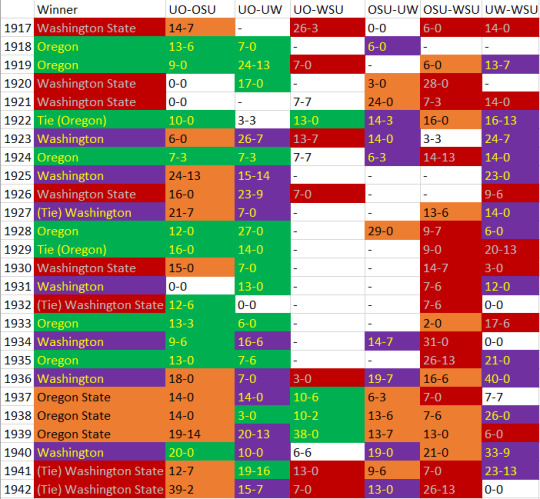

Northwest Cup Champs
Oregon: 21 Washington: 18 Washington State: 13 Oregon State: 7
The PCC years meant two things for Northwest football. The first is that they were largely irrelevant in the national sense. None of the teams were able to really compete for national titles, and rarely did any of them win conference titles. The second aspect is that within the four Northwest schools, there was never any one dominant team.
Oregon State was the only school to win more than two Northwest Cups in a row in these three decades, and that streak itself only lasted three years. Washington State, arguably the least successful of the four teams in this span, won 11 Cups.
-
Jim Owens vs Oregon State: 1955-1974
After decades of stagnation, several things seemed to happen all at once. The first is the return of a hierarchy in the Northwest. In 1955, former UCLA assistant Tommy Prothro came to Oregon State College and turned the Beavers into the premier team in the region, well, for a few years. OSC won back to back PCC titles in 1956-57. It was the only time any school from the Northwest won consecutive league titles in that league. The 1957 title was split with Oregon, but the Beavers won the head to head and went to Pasadena.
In 1957, former Texas A&M assistant Jim Owens was hired to become Washington’s head coach. It took Owens a few years to get things rolling in Seattle but he turned the Huskies back into the powerhouse of the Northwest.
Meanwhile, the Pacific Coast Conference was falling apart. A corruption scandal rocked the league, which dissolved in the spring of 1959. Football in the Pacific Northwest was shaken by the swift collapse. The California schools took the opportunity to cut out some dead weight and reformed a new league, the Athletic Association of Western Universities, which only included themselves and Washington. Both Oregon schools, Washington State, and Idaho were cut loose and became football independents. Montana had left the PCC in 1950 after decades of losing.
UW were the first ever champions of the new AAWU. Jim Owens’ Huskies went 10-1 in 1959, beating Wisconsin in the Rose Bowl to finish 8th in the country. Washington repeated the feat in 1960 with the same 10-1 record and a victory over #1 Minnesota in the Rose Bowl. The Huskies had a good claim for a national title, but the AP and Coaches polls declared their champions before the postseason so the Gophers were named champions despite the loss.
Washington would never reach these heights under Owens again, especially as the LA schools began to get their mojo back in the 60′s, but UW would remain the premier powerhouse in the Northwest for the next several decades. The Huskies won the conference again in 1963 but they went 6-5 with a 4-1 league record so it was just one of those strange occurrences.
I guess life as a five-team conference was pretty boring, so the AAWU let Washington State join in 1952 and both Oregon schools returned in 1954. The AAWU was now the PAC-8, but the Northwest programs continued to struggle as USC began to increasingly dominate the league.
The Ducks entered a profound slump, and Washington State was a nonfactor. Washington was still on top regionally, but struggled to compete against the either the Trojans or Bruins for league supremacy. Oregon State won the conference in 1964, their third under Tommy Prothro. OSU was tied atop the standings with Southern Cal, and were selected to face Michigan in the Rose Bowl where they lost 34-7. Prothro moved to UCLA the following the defeat, and led the Bruins to a Rose Bowl victory over #1 Michigan State the very next year.
Regional supremacy was all that Northwest schools could really fight for in the 60′s and 70′s. Mostly this boiled down to the Huskies and the Beavers. Dee Andros inherited OSU from Prothro and had several strong seasons in the late 60′s before Oregon State too entered a long slump.

Northwest Cup Champs
Washington: 27 Oregon: 21 Washington State: 16 Oregon State: 15
As you can see, the Northwest Cup generally boiled down to two races in this 20 year span. Firstly, Washington under Jim Owens and Oregon State under Prothro and Andros usually decided the best team of the foursome. Then, Oregon and Washington State were battling to avoid being the worst team in the PAC-8.
It was in this span that the Huskies finally took control of first place in the all-time standings. The Beavers came close to pulling themselves out of the basement, but only just miss the cut. The Cougars managed to sneak in a few wins, especially when UW and OSU were both trailing off towards the early 70′s. The Ducks were pretty atrocious, but the worst was yet to come.
-
The Don James Era: 1975-1993
Jim Owens resigned at the end of his final contract following the 1974 season, Washington haven fallen off in the past several years of his tenure. His replacement was Kent State head coach Don James. James had led the Golden Flashes to a MAC championship in 1972 and 9 wins in ‘73. It took James little time to get the Huskies back on track.
In 1977, UW started slow but finished the year 8-4 with a PAC-8 Championship and a win over #4 Michigan in the Rose Bowl. It was their first top ten end of season ranking in 18 years, and it was only the beginning. Washington would spend the next two decades as one of the top teams on the West Coast and frequently in the hunt for the league championship.
In 1980 and 1981, the Huskies won back to back PAC-10 titles, fighting off USC, UCLA, and Arizona State, who would be UDub’s main adversaries for the rest of the decade. From 1981 to 1984, Washington won ten or more games and finished in the top ten three times. In 1984, the Huskies went 11-1 with a final #2 ranking, if not for a loss to USC late in the season, they would have claimed the national title instead of BYU.
UCLA took control of the league for a few seasons in the mid to late 80′s, but Washington was reloading. The Huskies exploded back on the scene in 1990, going 10-2 with their only losses coming from national champion Colorado and the pesky Bruins. UW beat Iowa in the Rose Bowl to finish 5th in the nation.
In 1991, Washington painted their masterpiece. The Huskies went a perfect 12-0, breezing through the PAC-10 with a win over #9 Nebraska in non-conference play. UW thoroughly beat #4 Michigan in the Rose Bowl 34-14. Fellow undefeated Miami was named the national champions by the AP Poll, but the Coaches Poll (as well as several computers) declared the Huskies to be the better team and the proper national champs.
Washington was on pace to repeat as national champions in 1992 but dropped two of their final three and then lost the Rose Bowl in a rematch against the Wolverines. Don James retired following the defeat. He finished his career with a 150-60-2 record in Seattle and is hailed as UW’s best coach of all time.
What was going on with the rest of the Northwest at this time? Absolutely nothing. Washington’s dominance in the 80′s was coupled with a downturn on the parts of all three of their brother programs. Oregon and Oregon State had been mired in long slumps and regularly featured at the bottom of the standings. This downward trend culminated in the infamous “Toilet Bowl” in which the 2-8 Beavers fought the 4-7 Ducks to a 0-0 tie in an atrocious game that featured 11 turnovers and 4 missed field goals. With ties now gone from college football, it’s probably the last time we’ll ever see a 0-0 finish in a regulation football game.
Washington State was a middle of the road program at best during this time. The Cougars never came close to a conference title but they weren’t quite as bad as the Oregon programs for most of the 80′s.
But the winds of change were blowing, and the pieces were already set at all three schools to reverse their decades of misery.

Northwest Cup Champs
Washington: 40 Oregon: 25 Washington State: 18 Oregon State: 15
Washington was able to greatly extend their lead in the all-time standings during Don James’ tenure as head coach. The Huskies claimed 13 of 19 Northwest Cups at this time. Oregon and Washington State were able to sneak away with a few regional championships when UW was reloading, but that was it. Oregon State was positively atrocious during this stretch, one of the worst major college football programs of the era alongside Northwestern or Rice.
-
Revenge of the North: 1994-2007
A curious thing happened in the 1990′s. As the California schools all experienced low ebbs, all four schools from the Pacific Northwest exploded to retake control of the conference. Washington had already been a regular contender for PAC-10 titles for the past 15 years, but all four squads began to win conference championships in this era.
People from outside of the region were probably taken aback by the quick changing of the guard that saw all four Northwest schools compete for Rose Bowls, but the ground work was laid much earlier.
Rich Brooks was hired as Oregon’s head coach all the way back in 1977. Brooks slowly and carefully rebuilt the Ducks, turning them from an atrocious squad in the late 70′s to regularly mediocre by the early 80′s to competent by the late 80′s. UO went 8-4 in 1989 and 1990, and attended their first bowl games in over 25 years.
In 1994, Brooks finally took Oregon to the top. After dropping two non-conference games early in the season, the Ducks went 7-1 in PAC-10 play and won their first outright conference championship ever. UO faced off against undefeated Penn State in the Rose Bowl and lost 38-20, but the success of the 1994 season is seen as the turning point in Oregon’s program history. It had been the Ducks’ first time in Pasadena in 37 years. From then on, UO would be a regular contender for the conference title.
Washington won the PAC-10 the next year, though the Huskies were passed over for the Rose Bowl in favor of UCLA. Don James’ replacement was Jim Lambright, who was unable to match his predecessor’s success. Lambright was fired after the 1998 season after only going 45-22-1 in his six years at the helm.
One team that would have killed for that level of success was Washington State. The Cougars had scuffled along for decades without much winning or any recognition. Dennis Erickson briefly coached Wazzu for two years in 1987-88 before bolting to Miami, though not before delivering a 9 win season, which hadn’t been seen in Pullman in generations.
Mike Price replaced Erickson in 1989, and took the Rich Brooks approach to slow but steady improvement. WSU improved to 9-3 in 1992 and went bowling again in 1994. In 1997, everything came together. Under Heisman finalist QB Ryan Leaf, Washington State went 10-1, with a 41-35 win over #20 Washington in the Apple Cup to secure their share of the PAC-10 title. It was the Cougars’ first conference championship in 67 years and they were selected to play in the Rose Bowl. Wazzu lost 21-16 to #1 Michigan, but their #9 finish was a triumph for the long suffering program.
The final team to get their act together was Oregon State. The Beavers were still pretty atrocious for most of the 90′s, but Mike Riley brought some stability to the program in 1997. Riley only stayed for two years before bolting to the NFL, but he laid the foundation for Dennis Erickson’s return to the Northwest. Erickson quickly transformed OSU into a contender.
The 2000 season was quite a special time in the Pacific Northwest. Everything came together for three teams at the same time, creating the perfect storm. Oregon began the year unranked, then lost to #5 Wisconsin in non-conference play. But by October the Ducks were ranked in the top ten with big wins over #6 UCLA and #6 Washington. UO clawed their way to 6th in the AP leading to their end of season matchup with Oregon State.
The Beavers likewise were having arguably their best season in program history. OSU also began the year unranked but jumped into the polls after a 10 point win over #8 USC. Unfortunately, the next week Oregon State lost by three to the Huskies, ending their perfect season, but the Beavers kept winning, jumping up to 8th in the nation leading up to the Civil War.
UW was one of the favorites to win the conference that year, having started the season ranked 14th. This placement was vindicated following a 34-29 victory over #4 Miami. #6 Washington was upset by Oregon but then edged out Oregon State in back to back weeks to end September, then cruised to a 10-1 record to end the season with a magnificent pasting of rival Wazzu 51-3.
Everything came down to the Civil War. #5 Oregon and #8 Oregon State were suddenly playing in the biggest game in the rivalry’s history. The Beavers came out on top, winning 23-13 at home. The conference standings were tied at 7-1 between the Ducks, Beavs, and Huskies. Each team had a 1-1 record against each other in a three-way deadlock.
Arcane tiebreakers including Oregon’s loss to Wisconsin in non-conference play gifted Washington the trip to Pasadena. The #4 Huskies beat #14 Purdue 34-24. Meanwhile, #5 Oregon State mauled #10 Notre Dame in the Fiesta Bowl, demolishing the Irish 41-9 in their own claim to be the best team in the nation. #8 Oregon held off #12 Texas in the Holiday Bowl, winning 35-30.
The memorable 2000 season saw all three schools finish in the top ten. 10-2 Oregon had to settle for 7th place, probably kicking themselves for the loss to Wisconsin early in the year. Washington and Oregon State were both 11-1, and finished 3rd and 4th respectively. If they hadn’t all peaked at the same time, each of the trio could have played for a national championship.
The Ducks were even better in 2001, going 10-1 and climbing up to #2 in the AP poll, winning their second straight conference championship under coach Mike Bellotti. Controversially, UO wasn’t ranked in the top two by the BCS, and couldn’t play in the Rose Bowl either which was hosting the national championship game. Instead, #2 Oregon beat up #3 Colorado 38-16 in the Fiesta Bowl.
Washington State got back in the action. The Cougars had finished the 2nd to the Ducks in 2001 with a 10-2 record. The next year, the Wazzu tied USC atop the PAC-10 standings and attended their second Rose Bowl in six years, this time losing to Oklahoma.
From 1990 to 2002 the Northwest schools led an insurrection against California for dominance of the PAC-10. It was a glorious time, completely unprecedented in the history of West Coast football. Unfortunately it had to end. Washington probably would have kept winning under Rick Neuheisel but the university fired their head coach for gambling on basketball following the 2002 season. This sent the Huskies on a decade-long tailspin that saw them become one of the worst teams in the BCS conferences.
Mike Price didn’t make it to 2003 either, having left Washington State following his second Rose Bowl campaign for an ill-fated gig at Alabama. Bill Doba inherited a good Cougar squad and again went 10-3 in his first season, but the Cougars really fell off after than and ended up in the basement with their rivals.
Oregon and Oregon State fared much better. Mike Bellotti had the Ducks operating at a higher level than Rich Brooks ever had, routinely winning eight or more games a season. Mike Riley came back to Corvallis after Erickson left for the NFL and kept the Beavers regular contenders. However, the 2000′s were dominated by a resurgent USC. UO and OSU gave the Trojans more trouble than anybody else, but couldn’t do any better than 2nd place.
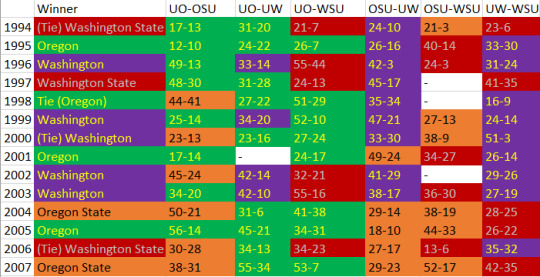
Northwest Cup Champs
Washington: 45 Oregon: 29 Washington State: 21 Oregon State: 17
The decade and a half from Washington’s national championship to the mid-2000′s when both Oregon and Oregon State were upsetting dynastic USC teams was the high water mark for college football in the Northwest. All four programs had some of their best and most memorable teams in this era.
All four won Northwest Cups, and all four played like they should have won even more. It’s a shame they all had to peak at the same time, none of them really got a moment on stage alone as the best team in the region.
-
Duck Dynasty: 2008-2019
Once again, a climactic shift occurred around 2009 which altered the face of football on the West Coast. Mike Bellotti’s Oregon Ducks were rolling. From 2005 to 2008 UO went 10-2, 7-6, 9-4, and 10-3. They were one of the best teams in the PAC-10 but always behind mighty USC.
Bellotti retired following the ‘08 season, Bellotti retired as Oregon’s all time winningest coach with a 116-55 record. Replacing Bellotti was his former OC, Chip Kelly. Under Kelly, the Ducks really took flight. UO went 10-3 yet again in 2009, this time winning the conference and making the Rose Bowl. It would turn out to be Kelly’s worst season in Eugene.
Meanwhile, Southern California was quickly unravelling as USC failed to win the PAC-10 for the first time since 2002 and sanctions were looming. Even rival claimants Oregon State and Cal were taking steps back. The path was wide open for UO to claim the top spot in the conference.
As far as the Northwest Cup is concerned, the Ducks were the only game in town. Following 2009, the Beavers only had one more quality season under Mike Riley before they slid to the bottom of the standings. Meanwhile the Washington schools were dead in the water. Their 2008 meeting was dubbed “the Crapple Cup” as the 1-10 Cougars managed to beat the 0-10 Huskies in double overtime. It was reminiscent of the Toilet Bowl back in 1984, and while both Evergreen state schools would eventually rebound, it wasn’t fast enough to stop UO.
Under Chip Kelly, Oregon became the most exciting program in college football. The flashy Ducks kicked in everybody’s teeth in 2010, going 12-0 and earning a trip to the BCS Championship Game where they controversially lost to Auburn. UO went 12-2 the next year, winning the PAC-12 and again making the Rose Bowl, this time beating Wisconsin. In 2012, Oregon lost the division to a resurgent Stanford but were otherwise perfect with a 12-1 record and a final #2 ranking, their second in three years.
Kelly departed for the NFL after the ‘12 season, leaving his OC and protege Mark Helfrich in charge. Things initially went really well under Helfrich. The Ducks went 11-2 in his first year in charge and once again made the National Championship Game for the 2014 season, losing this time to Ohio State. A 9-4 record in 2015 was the Ducks’ first single digit win total since 2007. It was 2016 that got Helfrich fired, in which the best team in the PAC-12 over the past decade slumped to 4-8 with seemingly no expectation.
As UO began to fall apart both Washington and Washington State rose to fill the gap. The Huskies rebuilt under Steve Sarkisian, but when Chris Petersen came to Seattle in 2014 UW really began to regain their strength. At the same time, Mike Leach was studiously turning the Cougars into a real threat. From 2016 to 2018 the Apple Cup decided the best team in the Northwest, and Washington went away with the trophy each time. Petersen’s Huskies attended three New Year’s Bowls from 2016 to 2018, their best season a 12-2 campaign in ‘16 that took them to the College Football Playoff.
It looked as though UDub was going to reclaim their spot as the best team in the region for the foreseeable future, but Petersen retired after the 2019 season and Oregon came roaring back to win the PAC-12 handily. I’m very curious to see what happens from here on out.
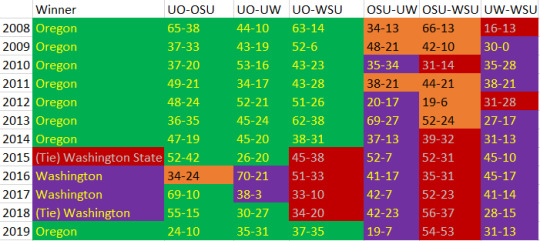
Northwest Cup Champs
Washington: 48 Oregon: 37 Washington State: 22 Oregon State: 17
The past decade has been the high water mark of Oregon football. The Ducks made two national championship games and finished in the top four in 4 of 5 seasons from 2010-2014. Washington’s resurgence under Chris Petersen only netted them 3 years as the top team in the conference. It remains to see if new head coach Jimmy Lake can keep the momentum up.
-
Hey all, I hope you enjoyed reading this series. I definitely had a good time writing it. Looks like football is finally starting so hopefully this time next week we’ll all be watching. I may be done with this series once the season starts, so thanks for reading!
-thecfbguy
1 note
·
View note
Text
Commerce and Law: A successful love marriage- A Webinar Brief
This article is written by Aditya Singh, from Symbiosis Law School, Noida.
The guest for this seminar was Sumit Kansal, who is a Corporate and Commercial lawyer based in New Delhi and his office name is Kansal Law Chambers, before practicing as an advocate in the Supreme Court he was a practicing Charted Accountant for an almost a decade. He got 96% in his 12th boards and was the State topper after which he completed his Graduation in the year 2010 from Shri Ram College of Commerce pursuing his CA degree along with his graduation in the very first year and completed his CA in 2011 in his first attempt, he is also a gold medalist in his law.
The host for this seminar was Ankit Vaid, who is a Senior Growth Consultant and Startup Growth Hacker at LawSikho which is a leading online company in India providing education through specialized courses and offering specialized and practical training in law. They bridge the gap in legal education between theory and practice through their custom training methods.
Q1. What was his first experience after completing Graduation and Charted Accountancy?
A1. After completing his Graduation, he was preparing for his CA attempt. At the time of his Completion of graduation he had completed his CA-Inter by then, which was known as Professional Competence Course (PCC), his final course was still remaining and his Article ship training was about to end. Once he completed his CA degree, he gave interviews and was campus placed with ICI with EY and he joined Ernst & Young.
He was in the Statutory Audit division of EY in Gurgaon and he worked with them for 1 year. He soon realized that auditing was not his Cup of Tea and since the very beginning he had more inclination towards E-Taxation and Company Law part of CA. It was then when he decided to go for studying full-fledged law. Since he was a young CA therefore, he did his CA practice accordingly, and, in the evening he attended his law classes. Though he had gotten into Delhi University and also got a very good rank in CLC but he later decided to complete his law from Punjab University in Chandigarh only and was a part of the 2013-16 batch there.
Q2. One of the most interesting cases he has encountered to date?
A2. One of his most interesting cases was that he was recently in NCLAT and he was appearing for the insolvency professional and IP of Ahmedabad. His side of the case was very strong and the other Counsel was representing the suspended directors of an insolvent company and the opposite Counsel was begging to the court, he was folding hands, so Justice Mukhopadhyay was there and he said that please don’t beg before the court. he said that you should win with a lot of self-esteem and courage and also to lose with courage. this is important because sometimes we feel that failure is there and we are not able to achieve this but all this is a part of life as at least from this you learn. this is always true especially for Chartered Accountancy and law also. CA study and law profession are both tough, when one group is left many people, he himself thought in the final year that it is a tough and difficult course.
But once you become a chartered accountant it becomes a little comfortable, but the life of a lawyer is very hectic, one might lose certain cases you win certain cases, ups and downs are there in the career, situations like Covid-19 are there which is proving to be very difficult for them and even some are losing courage, but these are all phases of life.
Click Above
Q3. Is it necessary for litigation to have a CA degree?
A3. If somebody is going for becoming a corporate or a commercial lawyer, the CA course per se is not mandatory but it is recommended as it is useful and CA delves into the hard-core subjects of finance, of Commerce, of Corporate laws, of auditing or of forensics which is very useful. However, if somebody is not a CA it is not a precondition. A student from a science or medical background will obviously have difficulty in reading a balance sheet but if you are a bachelor in commerce or perhaps you are a CS inter that’s why are you can easily go in such kind of practice.
Q4. The most prominent tax lawyers of India such as Mr. Nani Palikhivala or Mr. Arvind P. Datar were not CA’s, so if a lawyer is not a CA how can he take up his taxation or corporate law practice? What is the importance of the commerce stream and Can a student of science or arts stream practice tax law?
A4. A degree which is in CA CS or CMA or any diploma which even LawSikho provides taxation courses contract law drafting courses these are important. but law is a field that includes both procedural as well as substantive law the lawyers are very well versed with the procedural laws but for substantive laws they definitely have to read. Taxation law is not an easy subject you have to delve deep, you have to put into certain years of practice, you have to find your niche, then only you can make a for the difference between a lawyer who is a CA and one who is not.
Tax Law is a difficult kind of law difficult in the sense because you deal with numbers you deal with calculations and at the same time, you deal with an interpretation of the law which in itself is humongous and a very complex law so a student who does not have a Commerce background therefore suggested and will feel difficult to go into tax practice and a student who is a Commerce graduate he will understand much better as to what is a balance sheet, what is a P&L, what are the financial statements, what is the basic procedure or system of audit at least he will have certain idea understand what is the difference between a cash system and an accrual system in this way he gets a good grip and can read some Income Tax also in his graduation.
Q5. What is the importance of an internship, if one wants to pursue tax law or corporate law, as all they do is not litigation part but mostly the compliance or the bookkeeping part?
A5. Compliance part of an internship is the basic groundwork part, for example, if we take criminal law you will be a good lawyer if you know about the trials in the Civil Courts, another example is if you want to do NCLT litigation and if you know how a company is incorporated, what is MOA, what is articles of association, if you know the board minutes then you get a good grasp over NCLT matters. Similarly, tax compliance filing of Returns if it is done or a senior gives you it is a very good kind of thing it should be taken in the right stride and the interns need to have a little patience as they need to learn the nuances of the taxation practice they need to know what are salaries, what are capital gains, what are PGBP, how is a charitable trust functioning, how are the different returns for a Charitable Trust or a company or a salary filed, because the case moves from the assessing officer level which is the income tax officer and then it elevates towards the Commissioner of Income Tax appeals which are the fact-finding authorities wherein the CS go and then it goes to the ITAT and from there to the High Court and Supreme Court so unless they have that base it is very useful which is why the seniors knowingly give these kinds of work to the juniors.
Q6. Where does the role of a Chartered Accountant and a Lawyer differ and which practice is more rewarding?
A6. A Chartered Accountant can go to the Income Tax Appellate Tribunal and the CSTAT now which is the GST Tribunal we cannot go to the High Court for which there is a license which is the license of Bar Council of India and CA has the certificate of practice (CA-COP). So, a CA would be having very good knowledge about return filing about assessment procedures what is Section 142 its working and all the ground level part and he can argue in its favor and if he has a good knowledge about the law part then it is effective. As far as the lawyers are concerned, he knows well about the laws what is the Indian Evidence act, what is the limitation act, how to peruse the judgments so he can be instrumental there.
As regards to the question as to what is more rewarding according to the guest speaker none of the practices are good none of the practice is bad both are very esteemed professions you can gain a lot of money and lot of ethical work you can do it solely depends upon your competency and upon your skillset.
Q7. Is the company secretary also a good option for law students to pursue?
A7. As far as CS is concerned, we can do the compliance part well he can do the filings on the MCA, formation of company, preparation of memorandum, articles, registration din which is the director identification number. it is again not mandatory but only recommendatory but if you have an inclination towards the company law side of the corporate practice then go for CS if you have an inclination towards taxation side then CA would be preferable because in CA both the direct and the indirect taxes are dealt with at vast and the SEBI regulations, FEMA guidelines and the matters related to shareholders are dealt by CS.
Q8. Tax and crimes relating to black money and money laundering.
A8. For white-collar crimes we have the Benami law we have PMLA we have black money, in these laws if you have a good base with taxation then only you can very well function in the black money act. money laundering is something which is earned through some illegal activity and then that money is Routed into something which is shown as legal for example in a Hawala transaction there is some illegal activity going on and tomorrow that money is invested in a plot or a residential house and rent is earned out of it would seem as if it is a legal kind of thing. Here the knowledge of Income Tax, knowledge of legalities, knowledge of the prevention of money laundering act, all culminates into one which is why taxation and legal knowledge go hand in hand here.
Q9. What is the importance of drafting in tax matters?
A9. It is very instrumental and important many CA struggle at this as there are notices coming from income tax officers to which they are not able to reply in a good manner, as they are good with numbers they know the technical skills well but to write it on paper in a simplified language which is in consonance with the question put up by the AO gets difficult for them and here lawyers can play a good role. drafting is a thing which is learned over time and with practice and this is not the case with just taxation drafting but with any kind of law, for example, the matter on hand is about Professional misconduct of Chartered Accountants, lots of CAs these days are getting notices from the Institute of Chartered Accountants of India. So, in these kinds of matters the drafting is done in a different manner because it is not a court as such it is an administrative body. Therefore, knowledge of what is professional misconduct, what is merely a negligence whether it amounts to professional misconduct or not all this comes into play and is necessary to have knowledge about drafting.
Q10. If a lawyer has to give an opinion to a client on tax-related matters what should be the basics of those drafts?
A10. First, understand what is the matter, for example, a client of the guest speaker had a matter relating to the merger of two entities and he wanted to know about the MAT applicability which is the Minimum Alternate Tax as given under the Income Tax Act so it’s such a matter is in hand start reading the bare act and see where it falls further read the rules connected to it and the commentaries explaining them and then make your opinion it can be for one page or half page. then read some good articles on that opinion compare that article with your opinion see what is the difference in the opinion see if your opinion is legally correct and if it is legally correct and your belief system says that it is good for your client to go with that opinion.
Q11. How a can lawyer without any CA or CS qualification can understand finance as most of the lawyers do not have such qualifications?
A11. It will become difficult if you don’t have any kind of background and if you don’t know what is the difference between cash and accrual system web between profit and loss account what is authorized capital what is issued capital, subscribed capital, paid-up capital. In this situation, a lawyer can do some courses on these subjects of 2-3months course.
At LawSikho for example in their corporate taxation course, they are very comprehensive from basic to advanced level and they have included all the parts like compliance, drafting and litigation related to both indirect and direct taxes so a student will have an interlinked study between the direct and the indirect taxes as they have designed their corporate taxation course in that way.
Q12. If a law student wants to get into a law firm what are the various areas in Corporate law in which he/she can practice?
A.12 There is corporate advisory, mergers, and acquisitions which also includes restructuring, then there are matters relating to IPR which is broadly covered under corporate practice only and under Intellectual property rights also there are several fields such as trademarks, copyrights, and patents and then there is Banking Law under which Banking and Insurance matters relating to IRDA then there is capital markets advisory these are matters relating to the SEBI regulations which are the Securities Tribunal Act matters this can be the different practice areas as far as Corporate law is concerned.
LawSikho has created a telegram group for exchanging legal knowledge, referrals and various opportunities. You can click on this link and join:
https://t.me/joinchat/J_0YrBa4IBSHdpuTfQO_sA
Follow us on Instagram and subscribe to our YouTube channel for more amazing legal content.
The post Commerce and Law: A successful love marriage- A Webinar Brief appeared first on iPleaders.
Commerce and Law: A successful love marriage- A Webinar Brief published first on https://namechangers.tumblr.com/
0 notes
Photo

*Klinik Nikah Ponorogo Present..* 💞 Talk Show Pra Nikah. 💓 "Kamu mungkin belum menemukan si dia, dia yang akan menggenapkan separuh agamamu, dia yang akan menjadi penyemangatmu, dia yang akan menjadi teman hijrahmu, dan yang pasti kamu belum menemukan *Cinta Sehidup Sesurga* bukan?". Let's Join Us!🍃 💞 *Inikah Cinta yang Harus Ku Jaga SEHIDUP SESURGA...?* 💞 Bersama : 👳🏻♂ *Ustadz Vedha Dwi Septiawan* (Pembina Kelas Online Klinik Nikah Indonesia, Founder: @save_jomblo @mas.baper @penggerakhati , @hujancerita_ ) Dengan moderator : 👳🏻♀ *Septian Adi Nugroho* (Save Jomblo Ponorogo) Catet..📝 🗓 Ahad, 31 Desember 2017 ⏰ 08.30 - 12.00 WIB 🏩 D'Rizt Restaurant, PCC Mall, Ponorogo 💰 *HTM* 10K *OTS* 15K Fasilitas : 📌 Tea Cup 📌 Manajemen BAPER 📌 Teman Baru 💘 *KUOTA 150 PESERTA* __________________________________ 📍 Registrasi : 👳🏻♀ Ikhwan : 0822-3226-6361 🧕🏻 Akhwat : 0823-3991-1696. *Klinik Nikah Ponorogo...* 💞 Separuh Agamamu Ada Disini 💞 #creative #event #seminar #cinta #talkshow #seminar #remaja #teens #pendidikan #education #savejomblo #baper #masbaper #SjPonorogo ~~ Media patner: @penggerakhati @save_jomblo @mas.baper @klikponorogo #vd #syiarklik #nikaphobia #klik #kliniknikah #separuhagammuadadisini #savejomblo #event #seminar #talkshow #ponorogo (di Ponorogocitycenter)
#baper#education#remaja#ponorogo#sjponorogo#klik#vd#syiarklik#nikaphobia#event#creative#teens#talkshow#pendidikan#savejomblo#masbaper#cinta#seminar#kliniknikah#separuhagammuadadisini
3 notes
·
View notes